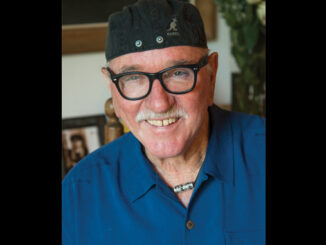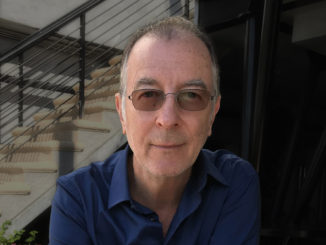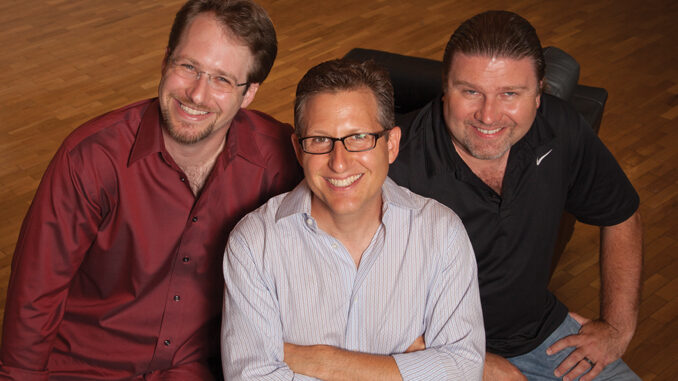
by Laura Almo • portraits by Deverill Weekes
There’s a revolution going on at JJ Abrams’ Bad Robot Productions and it has nothing to do with aliens, plane crashes or spies. It’s a change in the way music is being integrated into post-production. Music editors Tom Trafalski and Brian Bulman are back for a second season at Bad Robot ready to begin work, respectively, on the upcoming season of Person of Interest (2011-present) and a new series coincidentally entitled Revolution. Abrams’ production company is known for the groundbreaking TV series Lost (2004-10), Alias (2001-06) and, more recently, Alcatraz (2012).
Bad Robot, whose series bring a cinematic sensibility to episodic TV, is known for multiple action sequences, numerous visual effects, strong music scores and a very tight post-production schedule. Now the company has pioneered a workflow incorporating music editors from day one, simultaneously relieving pressure on the picture editors and paving the way for a more collaborative editing process between music and picture.
This workflow is the brainchild of music editor Alex Levy (who credits music editor Stephen Davis for his mentorship). Levy, a self-described “digital nerd” who grew up in Palo Alto, California, came up with the workflow for the pilot of Alcatraz after working on several Bad Robot productions, including Alias, Lost, Undercovers and the feature Mission Impossible – Ghost Protocol. Levy came to understand the producers’ creative process and technical needs, and adapted this workflow, which is a hybrid feature workflow amended to work in a television format.

Customarily, music editors would work off-site and their systems would not be linked to the picture editor’s. To link their systems, Levy learned the Avid, which was connected to the Unity, and could work with Pro Tools.
“On the Alcatraz pilot, I could quickly and easily go back and forth with the editor and the assistant,” recalls Levy, who is now working on Abrams and Bad Robot’s Star Trek sequel. “Instead of having to export and then re-import, I could just work directly in their system while they were working on other sequences.” The workflow was important on the pilot because of the very short timeline and the necessity to get things right; finding the right music and establishing the correct tone could influence whether or not a show is picked up or sold.
The producers liked the workflow so much that they applied it to Alcatraz and Person of Interest, their two shows that were picked up that season. And they’re adapting it to Revolution as well. “We’re really breaking new ground here in the sense that we’re the first ones to adopt this new workflow and apply it to multiple shows,” says Levy, who speculates that there’s probably someone else out there doing the same thing. “It’s too good of an
idea not to try and apply it to other projects.”
“We basically deliver the music for the picture editor,” says Trafalski, a Canadian import and a 20-year industry veteran (Transformers, The Island, Pushing Daisies) currently working on his second season of Person of Interest. “In the simplest form, we put the music in the editor’s Avid and the next time the editor opens it, the music is done.”
This is possible because of Avid Video Satellite, part of a trio of software plug-ins that enables Avid and Pro Tools to run in sync. According to Levy, Bad Robot has configured it in a “non-traditional” way so that the music and picture editors can work in tandem. The picture editor works on the Avid with the usual access to all of his or her bins. Meanwhile, the music editor works on his or her own system, which has both Pro Tools and an Avid, each on a separate monitor. However, the music editor’s system is connected to the Unity, a collaborative storage system/server, so he or she can access the picture editor’s bins and sequences that are ready for temp music.
“I have the capability to link Avid and Pro Tools together and transfer files between them,” says Trafalski, adding, “Digital Vortechs has been our show’s Avid equipment supplier and has been great in supporting our progressive needs.” Emphasizing the ease of the workflow, he says, “As soon as I’ve finished my work, it’s on the Unity and the picture editor can just log in and pick up where he left off.”

Which leads to one of the benefits of using this workflow: “Having these two applications running together has enabled us to get into the world of the picture editor and the Avid,” adds Bulman (Tropic Thunder, Max Payne), whose love of music and cueing up a song for friends harkens back to his youth in Phoenix, Arizona. After one season on Alcatraz, which is on “permanent hiatus,” Bulman is working on Revolution.
It’s a much more collaborative way of working; music editors are part of the team from early on. They’re working on-site every day, they get to know the show better, and the interaction between everyone is much stronger — it’s just a walk down the hallway.
“Being able to collaborate with the music editor just makes the work that much better and that much more fun,” says David Eisenberg, picture editor on Alcatraz and, beginning this season, Revolution. “I love the fact that Brian, my assistant Nona and I — or whoever is involved at any particular stage — can discuss a sequence. We can see where music should go and what the tone should be, and then Brian can get to work immediately.”
One key advantage of the workflow is that there is no need for the music editor to export QuickTime files. This means less rendering, which in turn frees up the assistants in the cutting room as well as their computers, so they can attend to more important parts of the workflow process. Nona Khodai, assistant editor on Alcatraz and now Revolution, estimates that each export takes about 90 minutes and that is time she can be focusing on other things. “I’m able to help with sound on a different sequence while Brian does music,” Khodai says. “If I need to give something to the promo department, I can free up my system to do that. Or if we have outputs to do for the directors and producers, I can do that.”
To utilize this workflow, Bulman and Trafalski had to become Avid- savvy. “You can’t learn anything from the manual; it’s just practice,” comments Trafalski, who says that certain functions in Pro Tools don’t exist in the Avid. He cites the need to understand Avid file structure and the concept of bins, sequences and projects. The most basic audio functions such as copying, pasting and moving files are difficult to do in the Avid. “After I started this gig, I thought I really had to go and apologize to every assistant editor I’ve ever worked with — for all the stuff I’ve sent them — because I had no idea how difficult it was to move things around,” he adds. Bulman already knew Final Cut Pro 7 before he learned Avid, which, he says, in a way made it more challenging because many audio functions, such as drag and drop, are similar in FCP and Pro Tools. Laughing about the challenge to master the Avid, Bulman reveals that he had a 30-day trial and learned on the job, but credits Levy with initially getting him up and running on the system. “Alex took the Pro Tools keystrokes and reconfigured the keyboard. This enlightened me on how to tailor the keyboard to other sections.”
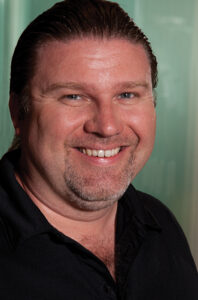
Becoming technically proficient frees up the music editors to be creative. Bulman and Trafalski concur that when working on temp tracks, finding the right piece of music is one of the most difficult and time-consuming parts. This is where the power of Pro Tools is a clear advantage. “Having a bin in Avid with a bunch of music cues and hitting play on all of them is really slow,” says Trafalski, whereas in Pro Tools, it’s almost instantaneous. “If we need a romantic theme — and I remember we had one in the fourth episode of Person of Interest — it takes me two seconds to find the cue,” he continues. “I can just highlight it, hit export, click on shared drive, drop it in the Avid and there it is. I’ve found exactly what I want and I can go on to the next cue. I audition music in Pro Tools and then assemble and cut it in the Avid. It takes me about a day to temp all the music for one episode.”
Learning the Avid has effectively made Trafalski, Bulman and Levy bilingual in the sense they can work in either system. It also adds another skill to the music editors’ tool kit, one that other music editors are considering. “I’ve talked to a lot of music editors and most of them are pretty open to learning the Avid,” says Levy. “But there’s a lot of resistance to cutting music in it because it’s a frame-based timeline, and not sample-accurate; you can’t edit to a sample. If you’re going to do a really fine edit, you’ll jump back into Pro Tools.”
For his part, Bulman does most of his editing and volume graphs in Pro Tools. “Then I’ll bring it into the Avid and take my Pro Tools offline entirely,” he explains. “I’ll check my work and do volume adjustments in the Avid.” The advantage is that once the music is in the Avid, it’s all coming from the same source, and this gives the editors, producers and directors a better feel for the music.
Highlighting the benefits of the workflow, Trafalski points out that if the music isn’t right, a scene might not work. “Music is our craft, and if you have us on board, we’ll usually have the right theme for the right character and the right tone for the scene. We get a lot less music notes.”
As a case in point, Person of Interest picture editor Ray Daniels explains, “Sometimes Tom will take two different cues and mix them together to create something new that I would never have done; that’s his craft, that’s his expertise. I would just go in and take one of the composer’s cues, play it the way he originally wrote it and go from there.”
Editorial for television didn’t use to be this complicated. But now, television post-production — á la Bad Robot — involves more complex visual effects, an elaborate music score and a grueling production schedule; the editor’s cut is due the day after principal photography is finished. There may be up to 90 scenes in an episode today compared to the roughly 50 scenes on earlier shows such as Lost. While it might seem like a luxury to have music editors doing the work, it really is essential.
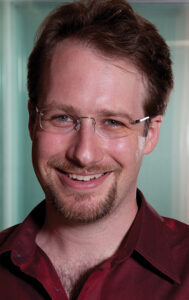
“It isn’t commonplace for the picture editors to have music editors on staff on a series,” acknowledges Mark Conte, picture editor on Person of Interest with nearly 30 years of experience. “But given the amount of time we have to cut the show with the amount of material that is shot, and the visual effects work that has to be done, it basically leaves no time for the music work.”
The consensus is that it’s a huge advantage for everyone involved to see a first cut of the show that has a nearly polished music track. “Sometimes, you can see early on where picture editing issues are that you otherwise might not be able to see,” says Conte.
Geoff Garrett, associate producer on Alcatraz and Revolution, initially gave Levy the green light for the creation of the workflow. “My philosophy behind it was, ‘Let the people who are experts at certain things be experts and work with us,’ he says. “Bad Robot is a really music- driven company. They work with fantastic composers, feature great scores and really try to do a movie a week.”
The music editor becomes knowledgeable about what the scenes are and what the producers’ intent is, and can in turn convey that to the composer. “I think the composers feel they have better information because the music editors have been working on the show for weeks and can say, ‘I know that moment was really important to the producers,’” Garrett explains. “The music editors can flag it for the composers to make sure they hit it in the right way.”
Steve Semel, co-producer of Alcatraz and Person of Interest, considers the tight bond and close communication between everyone a benefit that makes the process easier and the final product better. “Music and picture can be a two-way street,” says Semel, referring to the chance to see temp music incorporated before the picture gets locked, thus making it easier — and less expensive — to make changes. Plus, it means longer, more stable employment for music editors. “I think the writers/ producers/show runners love the idea of being able to communicate directly about the temp scores with somebody whose primary responsibility is to do that,” he adds.
Rather than saving music editing for the 11th hour, Bad Robot had the foresight to do something out of the ordinary. But perhaps it isn’t so long off until this workflow becomes common procedure. “I think it’s fantastic because it serves the product — and the human being — better,” says Bulman. “You can get invested in the project and there’s not as much of a ‘flash in the pan’ mentality that can be the bane of some people’s existence in this industry.” Plus, he adds, it’s a consistent paycheck.
The equipment package costs about $15,000 and is by no means something people will rush to put in their home studios, but it’s certainly a far cry from the $80,000 Avid used to cost. “It’s not an easy system to put up, but it’s definitely the wave of the future,” says Levy. For now, all would agree it’s a great workflow and a wonderful way to bring in some very talented music editors to work with on a more day-to-day basis.
“My hat’s off to Alex for helping to establish this,” says Garrett. “Also to Tom and Brian for having an open mind to try new things.”



